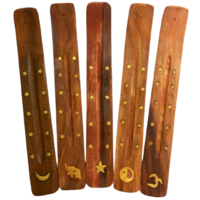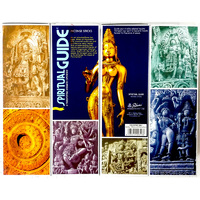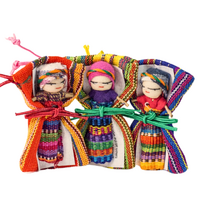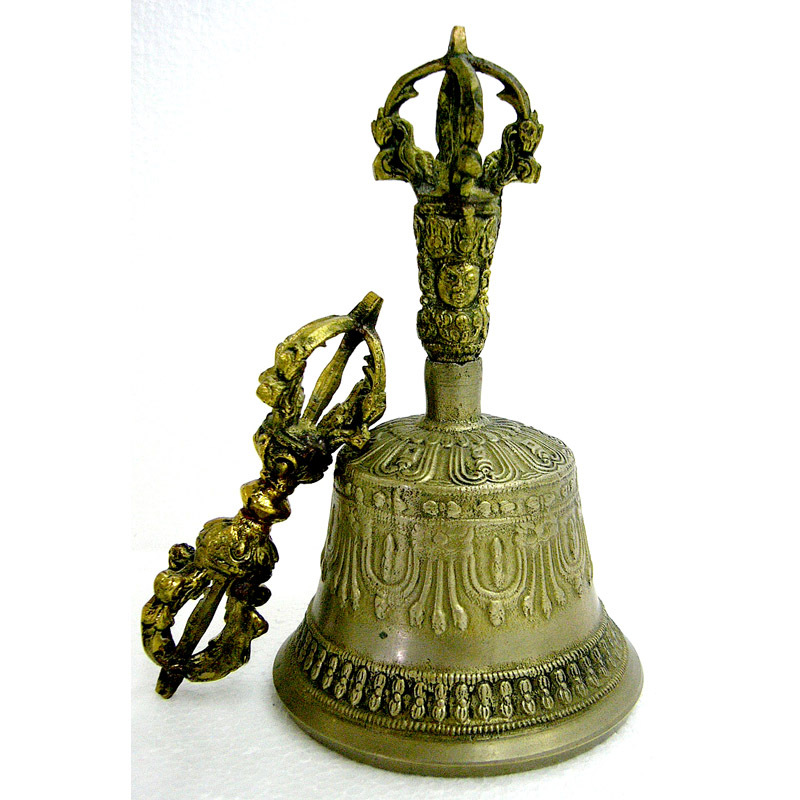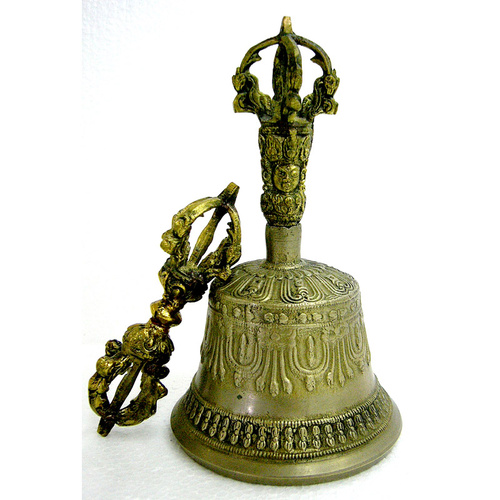A traditional Buddhist Bell and Dorge used to aid deeper meditation. Each section of the engravings on the bell and dorge signifies states of emotions that a meditator seeks to attain
8.5cm in diameter
17.5cm in length
Tibetan Bell & Dorje (Vajra): History, Use & Sound
What Are They?
The Tibetan bell (called ghanta) and dorje (or vajra in Sanskrit) are ritual tools used in Tibetan Buddhism. They are almost always used together in spiritual practices—symbolizing the union of wisdom and compassion, or feminine and masculine energies.
-
The Bell (Ghanta): Represents the feminine principle—wisdom, intuition, emptiness (shunyata), and the receptive aspect of enlightenment.
-
The Dorje (Vajra): Represents the masculine principle—compassion, method, power, and skillful means. The word vajra literally means “diamond” or “thunderbolt” in Sanskrit, symbolizing indestructibility and irresistible force.
Origin & Cultural Context
These ritual items originate from ancient Indian Tantric traditions and were incorporated into Tibetan Buddhism around the 8th–9th century CE, especially within the Vajrayana school of thought. The dorje was inspired by earlier Hindu ritual items and was reinterpreted within Buddhist philosophy.
In Tibetan Buddhism, these tools are most often used in:
-
Pujas (rituals)
-
Mantra chanting or recitation
-
Meditation practices
-
Initiation ceremonies (empowerments)
The bell is typically held in the left hand, and the dorje in the right, during ceremonies, and their combined use represents the path to enlightenment.
Use in Practice
-
During rituals, the practitioner may ring the bell rhythmically while holding the dorje, symbolizing the dynamic interplay of wisdom and compassion.
-
The bell is also used to clear energy or signal the beginning/end of a meditative session.
-
Some practitioners use it to cut through distraction or mark the transition between different phases of a practice.
Sound Qualities
Tibetan bells are not musical instruments in the Western sense. However, their sound quality is important for spiritual use:
-
They are crafted to emit a clear, resonant tone—often with multiple harmonics or subtle overtones.
-
The tone is intended to cut through mental clutter, focus the mind, and invoke presence.
-
The “ring” can vary depending on:
-
The casting method and metal blend (often bronze or a mix of sacred metals)
-
The shape and thickness of the bell
-
The size and strike method
-
-
Sound is not tuned to a specific note—bells may sound “tinny,” warm, soft, or sharp depending on the batch and individual piece.
Important Note: While sound may be aesthetically important to some, Tibetan bells are not musical instruments—they are sacred ritual tools. Their primary purpose is energetic and symbolic, not performance-based.
(tBDm)
| SKU | tBDm |
| Brand | Silverstone |
| Type | Stock |
bells
By: janet on 11 February 2022i recently purchased bells from silverstone, very happy with them all
(5)

